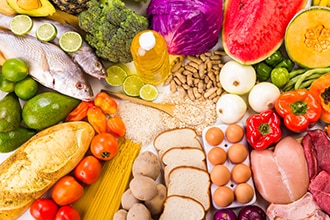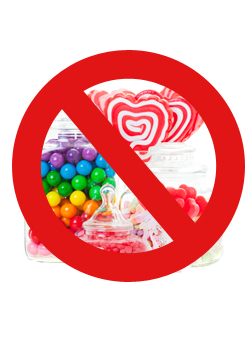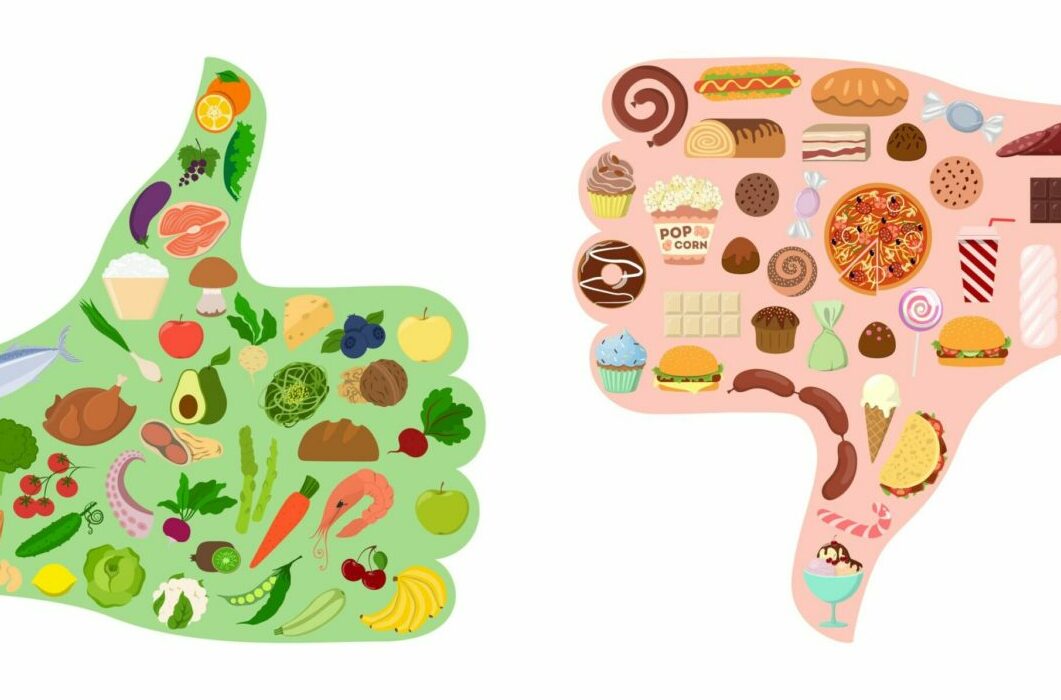
Although processed meats may seem healthy, they are not. These meats contain a lot sodium, saturated fats, artificial sweeteners, and other harmful ingredients. These substances are extremely unhealthy and contain no nutritional value at all. These substances can also contain chemicals such as sweeteners, artificial flavorings, and preservatives. These ingredients have been found to be dangerous for our health.
Ground meat should be consumed within two days of purchase. Ground meat is contaminated with bacteria, which can cause food poisoning or other illnesses. Although it might seem tempting to eat ground steak right away, this is not a good idea. In your food, bacteria can grow and multiply making it more dangerous. Make sure to cook your meat well before you prepare it.
Low-fat foods are not recommended. The low-fat versions of these foods are typically filled with unhealthy ingredients like added sugars, vegetable oils, and artificial preservatives. These products are often less nutritious than the full-fat versions, but can still mimic the taste of full-fat food. Natural sweeteners should be preferred. These are safe and contain no calories. Just make sure you don't eat processed or fast foods!

The problem with processed meats is that they are laden with sodium and other additives. High-fructose corn syrup, for example, has a high level of sugar. It also contains nitrates which have been linked with higher cancer risk. Pasteurization has also killed the good bacteria found in milk. It is not worth the extra calories or fats.
Raw apples are safe, but they can be dangerous. These fruits' skins and peels are difficult to digest. These fruits are rich in potassium but not recommended to be eaten raw. Avocados taste best when eaten as a pure fruit. These fruits are like candy bars for the body. These fruits and vegetables should be cooked. You're better off eating them cooked.
Pretzels make up a popular midtown snack in New York City. As a nutritionist, Cara Walsh warns that these carbs are loaded with sugar and no nutrients. People tend to eat too many of these carbs, which can lead to increased health risks. In addition, they are not a healthy food for the body. It can still be great for calories.
There are many foods to avoid. High levels of sodium and fat are found in processed meats. Consuming too many of these foods could cause damage to the blood vessels. Avoid prepackaged meats. They are high in sodium and have added sugars and preservatives. Frozen or not, these meals can be very unhealthy. These meals are high in calories and can be over-processed.

Furthermore, processed meats have a reputation for being unhealthy and should not ever be eaten. They can be high in sugar, transfats, and other harmful ingredients that are linked to many diseases. When you decide to eat meat, make sure to choose organic products. People with particular health concerns should choose organic products. There are a lot of fruits and vegetables that are good for you, and you should avoid them if you can.
You should never eat hot dogs. They are made from dyed meat and contain artificial colors and flavorings. Pickled pigs' feet are made from chopped hooves and soaked in brine. Chitlins refer to deep-fried intestines of pigs. Spam is a delicacy that's made of pork bits encased in gelatin. Apart from this, there are other foods you should not ingest.
Fried foods can also be dangerous. They are high in saturated fat and sodium. It's better to stick with natural foods. Many people are unaware that low-quality, flavored food is harmful. The wrong food choices can lead to weight gain and pressure on the joints. Among the "usual suspects" are sugar and salt. Despite their appearance, fried and processed foods are bad for the heart.
FAQ
Why does weight change as we age?
How do you know if your bodyweight changes?
When there is more muscle mass than fat, weight loss can occur. This means that you must consume more calories than you use daily. Low activity levels are the most common cause for weight loss. Other factors include stress, illness and pregnancy. If there is more body fat than muscle mass, then weight gain can occur. This happens when people consume more calories than they burn during the day. The most common causes are overeating, increased activity, hormonal changes, and excessive calories.
We eat less calories than we burn, which is the main reason our bodies lose weight. When we exercise regularly, we increase our metabolism rate which burns off more calories throughout the day. But this doesn't guarantee that we'll lose weight. All that matters is whether we're losing weight or gaining muscles. If we are burning more calories than what we eat, then we will lose weight. But if we're consuming more calories than we're burning, then we're actually storing them as fat.
As we age, we become less agile and don't move as often. We also tend have less food to eat than when our children were young. Also, we are more likely to gain weight. On the other hand, we have more muscle mass and look larger than we actually are.
Without regularly weighing yourself, it is impossible to gauge how much weight you have lost. There are many different ways to measure your weight. There are many ways to measure your weight. You can check your waist, hips, thighs, arms and legs. Some prefer to use bathroom scales, while others prefer tape measures.
For a better track of your progress, try to weigh yourself once per week and measure your waistline once every month. You can also take pictures of yourself every few months to see how far you've come.
Online, you can find out your height and weight. If you're tall at 5'10", and weigh 180lbs, your weight would be 180.
What is the difference in a virus and bacteria?
A virus is an organism microscopic that can't reproduce outside its host cells. A bacterium (or single-celled organism) reproduces by splitting itself into two. Viruses measure only 20 nanometers in diameter, but bacteria is up to 1 millimeter in size.
Viruses are usually spread through contact with infected bodily fluids, including saliva, urine, semen, vaginal secretions, pus, and feces. Bacteria are often spread via direct contact with contaminated surfaces or objects.
Viral infections can be transmitted through skin cuts, scrapes and bites. They may also get into the body through the nose and mouth, eyes, ears or rectum.
Bacteria can enter the body through wounds. They can also get into our bodies via food, water or soil.
Both bacteria and viruses can cause illness. But viruses do not have the ability to multiply within their hosts. They can only infect living cells and cause illness.
Bacteria can spread within the host and cause illness. They can invade other areas of the body. That's why we need antibiotics to kill them.
What are 5 ways to live a healthy lifestyle?
Healthy living means eating right, exercising regularly and getting enough sleep. It also involves managing stress and having fun. Good eating habits include avoiding processed foods, sugar, unhealthy fats, and avoiding junk food. Exercise burns calories and strengthens the muscles. You can improve your memory and concentration by getting enough sleep. Stress management is a way to reduce anxiety levels and depression. Fun keeps us happy and healthy.
Do I need to count calories?
You might be asking "What is the best diet?" or "is counting calories necessary?" The answer is dependent on several factors like your current health status, personal goals, your lifestyle, and your preferences.
The Best Diet - Which One Is Right To You?
The best diet for me depends on my current health status, my personal goals, my preferences, and my overall lifestyle. There are many different diets, some good and some not so good. Some diets work better than others. So what should I do? How can I make the right choice?
These are the questions that this article attempts to answer. It starts with a brief introduction of the different types of diets available today. Then, the pros and cons of each type of diet are discussed. The final step is to determine which one is right for you.
Let's first take a look at different diets.
Diet Types
There are three main types of diets: low fat, high protein, and ketogenic. Let's take a look at them all below.
Low Fat Diets
A low-fat diet restricts fat intake. This is accomplished by decreasing the intake of saturated fats such as butter and cream cheese. and replacing them with unsaturated fats (olive oil, avocados, etc.). People who are looking to lose weight quickly and easily will benefit from a low-fat diet. However, this kind of diet may cause problems such as constipation, heartburn, and indigestion. If a person doesn’t receive enough vitamins from their foods, this can lead to vitamin deficiency.
High Protein Diets
High protein diets are known to restrict carbohydrate intake and promote the consumption of proteins. These diets are more protein-rich than others. These diets are meant to increase muscle mass, and burn more calories. However, they might not provide enough nutrition for those who need to eat frequently. Also, they tend to be very restrictive, so they aren't suitable for everyone.
Ketogenic Diets
Also known as keto diets, ketogenic diets are also called keto diets. They are high fat and moderately carbohydrate and protein-rich. Athletes and bodybuilders use them because they allow them more time and harder training without feeling fatigued. They do require strict compliance to avoid any side effects like fatigue, headaches, nausea, and headaches.
What is the working principle of an antibiotic?
Antibiotics are medications that kill harmful bacteria. Antibiotics are used to treat bacterial infections. There are many types and brands of antibiotics. Some are taken orally, some are injected, and others are applied topically.
People who have been exposed are often given antibiotics. One example is if someone has had chickenpox and wants to prevent shingles. A penicillin injection might be given to prevent pneumonia in someone who has had strep.
Children should not be given antibiotics without the consent of a doctor. Children are at greater risk than adults for developing serious side effects from taking antibiotics.
Diarrhea is one of the most common side effects of antibiotics. Other possible side effects include stomach cramps, nausea, vomiting, allergic reactions, headaches, dizziness, and rashes. These side effects usually disappear once treatment has ended.
How do I get enough vitamins?
You can obtain most of your daily requirement through diet alone. Supplements may be necessary if you are not getting enough of a particular vitamin. Multivitamin supplements can be taken that contain all the vitamins you need. Or you can buy individual vitamins from your local drugstore.
Talk to your doctor if there are any concerns about getting enough nutrients. You can find vitamins K and E in dark green leafy vegetable such as spinach, kale and turnip leaves, as well a variety of sweet potatoes and sweet potatoes.
Ask your doctor if you're not sure how many vitamins you should take. Your medical history and current health will help you determine the best dosage.
Take herbs and other supplements to improve your immunity
Natural remedies and herbs can be used to increase immune function. You can use ginger, garlic, echinacea oregano oil and vitamin C as examples.
However, these herbal remedies should not replace conventional medical treatment. Side effects may include nausea, diarrhea, stomach cramps (dizziness), headaches, dizziness and stomach cramps.
Statistics
- Extra virgin olive oil may benefit heart health, as people who consume it have a lower risk for dying from heart attacks and strokes according to some evidence (57Trusted Source (healthline.com)
- This article received 11 testimonials and 86% of readers who voted found it helpful, earning it our reader-approved status. (wikihow.com)
- nutrients.[17]X Research sourceWhole grains to try include: 100% whole wheat pasta and bread, brown rice, whole grain oats, farro, millet, quinoa, and barley. (wikihow.com)
- In both adults and children, the intake of free sugars should be reduced to less than 10% of total energy intake. (who.int)
External Links
How To
How to keep your body and mind healthy
This project had one goal: to provide some tips on how to keep your body healthy. Understanding how to maintain health is the first step in maintaining your health. We had to learn what was good for our bodies in order to do this. Then, we looked at all the ways people tried to improve health. We discovered many things that could benefit us. Finally, we came up with some tips that would help us stay healthier and happier.
We began by looking into the various types of food we eat. We learned that certain foods are bad for us while others are good. We know sugar can cause weight gain and is therefore very harmful. Fruits and vegetables, on the other hand are healthy because they are rich in vitamins and minerals that are vital for our bodies.
Next, we discussed exercise. Exercise helps our bodies get stronger and gives them energy. It makes us feel happy. There are many activities that you can do. Some examples include walking, running, swimming, dancing, playing sports, and lifting weights. Another way to increase our strength is through yoga. Yoga is great for flexibility and improving breathing. It is important to avoid junk food, and drink lots of water, if we wish to lose weight.
Let's talk about sleep. Sleep is one of the most important things that we do every day. Lack of sleep can lead to fatigue and stress. This leads to problems such as headaches, back pain, depression, heart disease, diabetes, and obesity. If we want to be healthy, we need to get enough sleep.